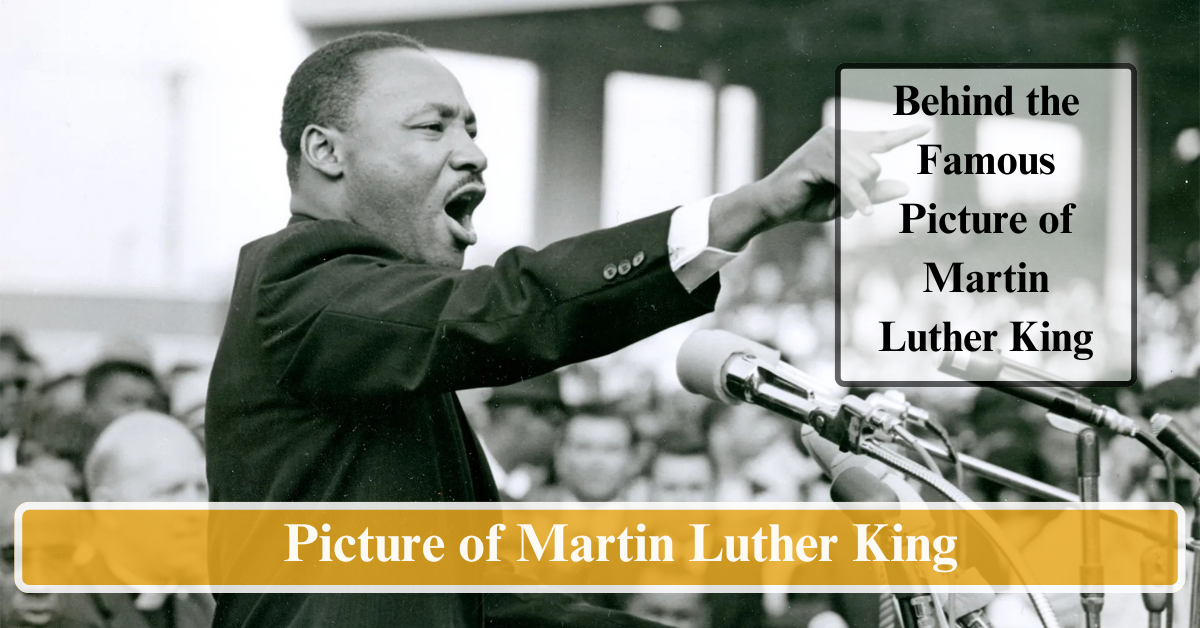Martin Luther King Jr., one of the most influential figures in American history, is celebrated for his profound impact on the civil rights movement. Born on January 15, 1929, King would have been 96 years old in 2025. Throughout his life, he dedicated himself to fighting for racial equality and justice, using peaceful methods and eloquent speeches to inspire millions. He was married to Coretta Scott King, with whom he had four children: Yolanda, Martin III, Dexter, and Bernice. Despite his tragic assassination in 1968, his legacy continues to shape discussions on race, justice, and equality today. As of 2025, Martin Luther King Jr.’s net worth is somewhat difficult to quantify directly due to the nature of his work, but the significant cultural and societal impact he left behind has only grown in value over time, making him an enduring symbol of hope and resilience in American history.
Key Takeaways
- Symbol of Equality: The pictures of Martin Luther King serve as a powerful symbol of his lifelong commitment to racial equality, justice, and peace.
- Iconic Imagery: King’s most famous photographs, especially from the March on Washington, continue to inspire generations to pursue social justice.
- Nonviolent Legacy: The legacy of nonviolence that King championed remains a key element in the global movement for human rights and equality today.
- Global Influence: Martin Luther King Jr.’s impact extends far beyond the United States, inspiring social justice movements around the world.
- Ongoing Relevance: Despite his tragic death, the picture of Martin Luther King remains a powerful reminder of the ongoing fight for racial justice and equality.
Powerful Legacy
When we look at the pictures of Martin Luther King, they tell the story of his life’s mission—dignity, determination, and an unwavering commitment to nonviolence. One of the most iconic and widely recognized images of him comes from his speech during the March on Washington on August 28, 1963. The powerful photograph of King standing before the Lincoln Memorial, with hundreds of thousands of people in attendance, captures the essence of his leadership. In the image, he delivers his famous “I Have a Dream” speech, a moment that solidified his place in history and forever linked his image with the fight for racial justice.
These photos are not just historical records; they embody the spirit of the civil rights movement—a movement that was characterized by nonviolent protest, collective action, and the fight for civil liberties. The pictures of Martin Luther King, whether of his speeches, marches, or personal moments, symbolize the relentless drive for equality. These images have been reproduced on books, documentaries, and posters, continuing to inspire future generations.
In 2025, as the world continues to grapple with issues of racial inequality, King’s image remains a beacon of hope. From the Civil Rights Act of 1964 to his profound influence on modern-day social justice movements, his legacy is far-reaching. The picture of Martin Luther King is not just about the past; it is a reminder of the ongoing fight for justice and equality. His image serves as a catalyst for change, urging individuals and movements to persist in their efforts to confront injustice.
Enduring Impact
As we look back on the pictures of Martin Luther King, we are reminded of the principles he stood for: peace, equality, and justice. These images are not just of a man standing on a podium or leading a march; they represent the broader movements and struggles for civil rights that continue today. The most famous photo, depicting him in front of the Lincoln Memorial, is often accompanied by the echoes of his powerful voice calling for a world where all people are judged by the content of their character, not the color of their skin.
The visual imagery of King—whether from protests or speaking engagements—continues to resonate globally. King’s marches, such as the Selma to Montgomery march in 1965, where he walked side by side with others demanding voting rights for Black Americans, have left an indelible mark in both photographs and history. These images captured more than just a protest; they became an embodiment of his philosophy that change through nonviolent action could transform the nation.
Though Martin Luther King’s life was tragically cut short at the age of 39, his images continue to inspire the world. The 1968 assassination did not end his influence; instead, it magnified his legacy. Over the years, his life and work have inspired countless movements aimed at fighting discrimination, advocating for human rights, and achieving equality. Today, the picture of Martin Luther King remains a powerful visual testament to the ongoing struggle for civil rights, justice, and peace in America and beyond.
King’s life and work have been recognized in countless ways, from the Martin Luther King Jr. Day, a federal holiday dedicated to his memory, to the statues and monuments erected in his honor. These tributes are grounded in the same principles that King fought for—equality, justice, and dignity. The images of King are more than just relics of the past; they are ongoing calls to action for those who continue to fight for racial justice in the present day.
In conclusion, the picture of Martin Luther King encapsulates not only the man but the movement he led and the lasting impact he has had on both American and global society. His image, now iconic, serves as a reminder of the transformative power of nonviolent protest and the enduring quest for racial equality. Whether displayed in books, documentaries, or monuments, these photos keep the message of hope, peace, and justice alive for future generations, urging them to continue the work that King began more than half a century ago.

